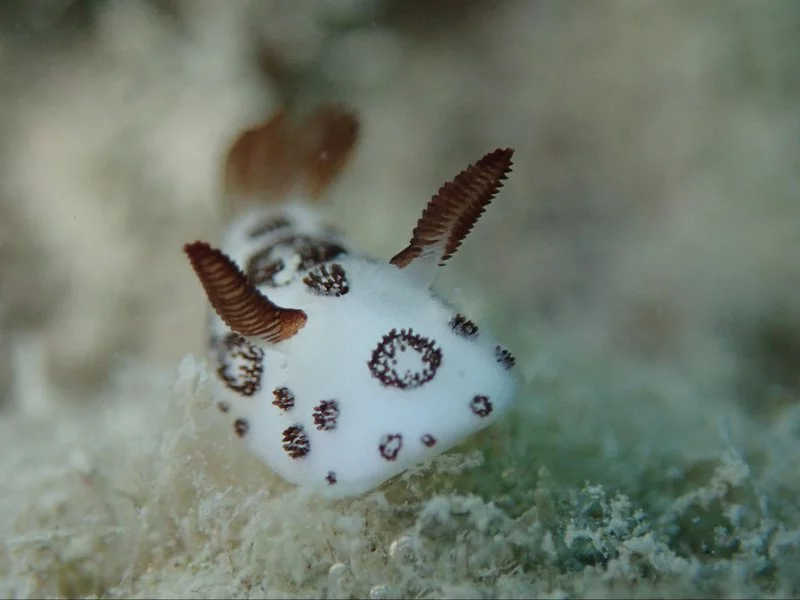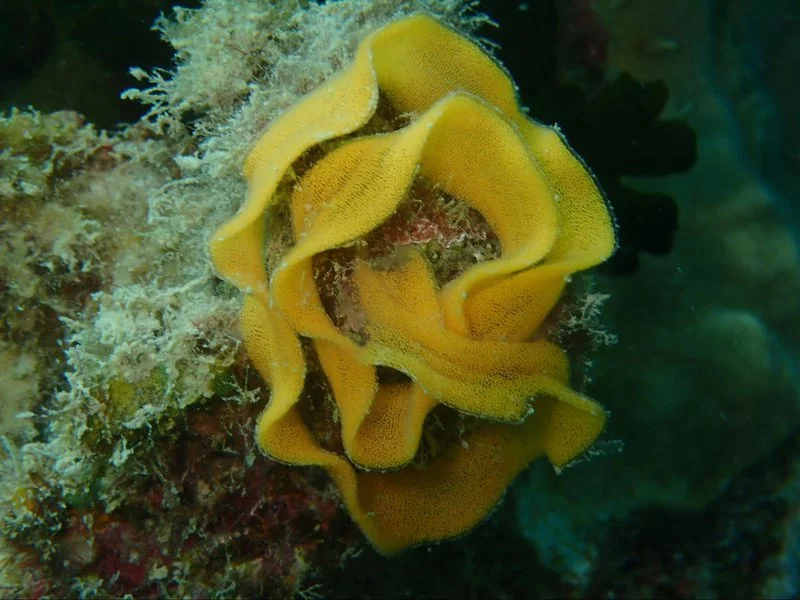Nudibranchs are a family of soft bodied shell-less marine gastropods which are often referred to as sea slugs. However the image that is conjured by the word slug is definitely not an accurate representation of what most nudibranchs look like. There are over 3000 different species of nudibranchs and they come in an almost unlimited array of incredible colours, patterns and body shapes, they are sometimes called jewels of the sea. The name nudibranch refers to the gills of these animals, they are not internal like with a lot of marine organisms they are located on the outside of the animals body, nudi= naked branch= lungs.
Nudibranchs have an extremely wide distribution and can be found world wide from the freezing waters in the Arctic and Antarctic to the warmer waters of tropical and temperate regions. The depth range of these little guys is just as wide. Most species are found in shallow waters and intertidal zones however there are some species which have been found living at depths close to 2500 meters. No matter what depth they live at most nudibranchs are benthic organisms which means they live and feed on the seafloor, however there are a few exceptions to this such as the species in the Glaucus genus which spend their lives floating with the currents just under the water's surface.
Nudibranchs also have quite a diverse range of body forms and sizes. Most have a base oblong shaped mantle and a muscular “foot†which they use for locomotion. They also have two ear-like structures on their head called rhinophores which are actually chemosensory organs that they use to sense different chemicals in the water and find things like food. On the anterior (back) of the animal there is usually a feather like structure which is actually their lungs, these feathery appendages extract oxygen from the water. Some groups of nudibranchs are even covered in tentacle-like structures called cerata. Their colouring is the most diverse and variable of any group of animals in the world. The reason for the bright colours and intricate patterns is the lack of shell. Millions of years ago nudibranchs evolved to lose the protective shell, characteristic of gastropods, once they reach the adult stage. To replace the protection provided by a shell some nudibranchs adopted bright colours as a defence to advertise to would-be predators that they are toxic. Others took their appearance in the opposite direction and adopted a more cryptic look to blend in with their environment. The size of these stunning slugs can range from as small as a few millimetres to a foot in length.

In addition to their appearance some species of nudibranchs have also developed different chemical defences. Some have the ability to produce and secrete toxic chemicals through their skin while others have evolved to utilise the chemical defences of their prey. For example, species in the Glaucus genus that feed on stinging hydrozoans. These hydrozoans do not harm the nudibranch and once it has eaten them it takes the hydroid stinging cells and moves them to the tips of its cerata (tentacle like appendages). These cells are then used in the nudibranch's own defence and when touched it is able to deliver a sting identical to that of its hydrozoan prey.
Nudibranchs are simultaneous hermaphrodites which means they have both male and female sex organs at the same time. While mating the transfer of sperm is reciprocal, both nudibranchs take on sperm and fertilise eggs. The fertilised eggs are usually laid on or close to the species prey of choice. The eggs of some nudibranchs can be quite beautiful as they are laid in a spiralling ribbon-like formation that resembles a rose. Once the eggs hatch the larval nudibranchs drift in the ocean as plankton, however there are a few species which emerge as fully formed animals.




